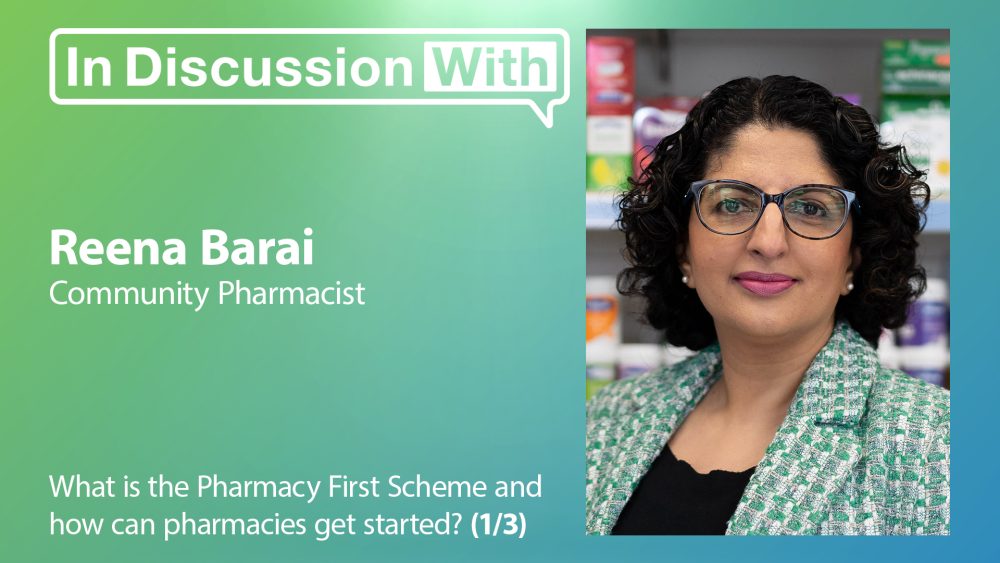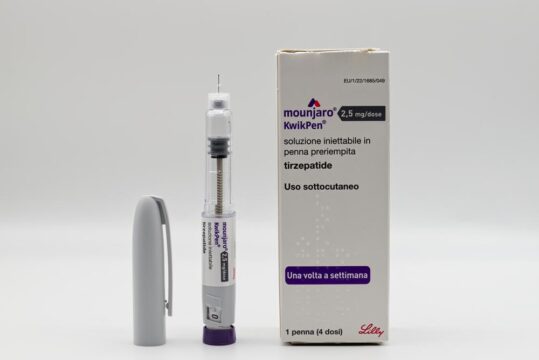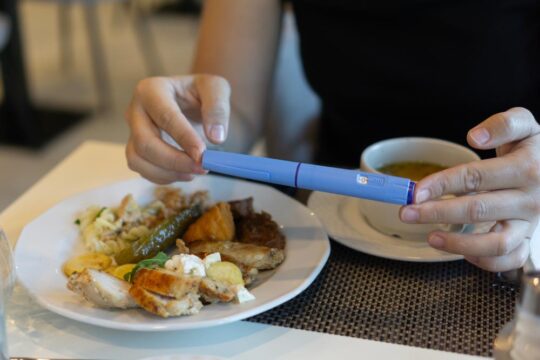Advertisment
What is the Pharmacy First Scheme and how can pharmacies get started?

Reena Barai is a community pharmacist and owner of the family business, SG Barai Pharmacy in Sutton in Surrey. This year she and her pharmacy team have been involved in the implementation of the Pharmacy First scheme and she has appeared in an NHS England video describing the service. IMI spoke to her to find out more.
The Pharmacy First Service embraces several aspects including the emergency supply of medications after referral from NHS 111 and dealing with minor illness referrals from GPs. Probably the area that has attracted most attention is the management of seven common infections in accordance with clinical protocols and Patient Group Directions (PGDs). The seven conditions are: acute otitis media, impetigo, infected insect bites, shingles, sinusitis, sore throat and uncomplicated urinary tract infection. Patients can be referred to the pharmacy by their GP or can self-refer and simply walk into the pharmacy.
For some years patients with minor illnesses have been encouraged to consult a pharmacist in the first instance but “there was a limit to what we could do and what we could supply to treat these patients”, says Ms Barai. It was frustrating for pharmacists to be unable to supply the required treatment and complete the episode of care, she explains. “What was actually happening was we were ….. sometimes able to offer some self-care advice, sometimes able to offer something they could buy over the counter to help relieve their symptoms but sometimes having to refer them back to the general practice to see somebody to get something prescribed”, she says. The Pharmacy First Service was born partly in response to the problems with access to GP services post-Covid and, in particular, recognition of the need to reduce the workload in primary care so that general practice only sees the patients that it really needs to see. Patients with simple, minor conditions or common conditions that are included in the Pharmacy First seven clinical pathways can then be seen by a community pharmacist – often closer to home and with no appointment necessary – so it’s more convenient for patients too, she explains.
Patient Group Directions (PGDs)
“The PGDs are legislation that allows the safe supply of a prescription-only medication (POM) by certain healthcare professionals and within all PGDs you’ve got inclusion criteria and exclusion criteria”, explains Ms Barai. Many community pharmacists also have independent prescribing qualifications, she notes. “I think PGDs are a great stepping stone towards what I’d love to see in community pharmacy – that …. there is an independent prescriber in every pharmacy” Such individuals should have a scope of practice that would allow them to support patients more effectively than in the past. Furthermore, integrated IT will be essential “so that when we’re prescribing, everybody knows what we’re doing and [that] we’re doing things safely and that to me is the ultimate goal and I think that’s why Pharmacy First and the clinical pathways are really exciting. We’ve had PGDs before with vaccines and things like that but this is the first time [that] we’re really getting them at a national level for antibiotics and products like that. So, I really hope the sector embraces it. …. I’d love to see pharmacy technicians being able to use Patient Group Directions in the future as well”, she says.
Getting started
“The preparation for Pharmacy First has been quite intense”, recalls Ms Barai. Her team spent the whole of January looking at the protocols and clinical pathways, understanding the PGDs and working out how to operationalise the service. Training was high on the list “because we all felt that there were some skill gaps in our knowledge and we wanted to make sure that we were able to safely look inside somebody’s ear, for example, and feel confident of what we’re looking at”, she says. It was also important to ensure that the day-to-day running of the pharmacy was under control because “we didn’t know whether we’re going to have a queue out the door on the first day” or whether demand would be steady. “The third element was the marketing – talking to our GP colleagues, talking to our patients about this new service and making sure that they were aware of the ins and outs and …. how the service works and how people can be referred or how they can walk in to see us”, she explains.
About Reena Barai
Reena Barai started her career as a hospital pharmacist 25 years ago and then took over her family (community pharmacy) business 20 years ago. She works in the pharmacy six days a week, running the pharmacy. In addition, she is a co-founder and co-host of the Female Pharmacy Leaders Network and until recently she was the co-chair of an Integrated Neighbourhood Team. Previously she has worked in primary care and as a GP practice pharmacist and has been a CPP tutor. She has also served as a board member of the National Pharmacy Association and as a Committee Member of what was the Pharmaceutical Services Negotiating Committee (PSNC), now Community Pharmacy England (CPE).
Read and watch the full series on our website or on YouTube.
This episode of ‘In Discussion With’ is also on Spotify. Listen to the full podcast now.





